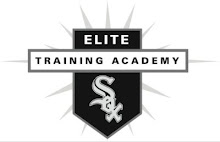Yesterday I took a lift to the top of the Academy to film straight overhead of a few professional hitters. Jim Adduci of the Chicago Cubs, and JT Restko of the Texas Rangers worked out while I filmed. Jimmy was in High A this past year, while JT finished in Double A. Those that are really into hitting instruction have seen a clip filmed of Pete Rose in the 1970's from straight overhead in slow motion. This is the only slow motion clip I have seen from the top view. I knew I had the access to do this, so I wanted film a few current players. I wanted people to be able to see what hand path really looks like. As an instructor, I use the verbal cue of "taking a straight path to and through the ball." This cue is designed for a hitter to stay in the hitting zone for as far as possible, and to keep from prematurely pulling off the ball. Still, the thought process and the actual result differ. The hands take a curved path around the body on the way to the ball, even when they take the correct "inside the ball" path. You can see in the below picture where I marked hand path with a red dot. Three of these clips show a perfect semi-circle, which would indicate a perfect hand path. The clip in the upper left hand corner, shows the hitter cutting off his swing early. Click on the picture below to see.

Here is something I found very interesting. You could really see the torque created by the hitters as the lower body began to fire as the upper body remained closed. This separation of the hips and shoulders creates the torque in the swing. In the video below you will see this as the front heel begins to plant. This is a result of good synchronization in their swings. JT (the righty) creates a bit more, because he closes off his front shoulder more. He has very quick hands, which allow him to still take a correct path to the ball. This swing synchronization is the most important aspect of getting maximum output from the swing.



No comments:
Post a Comment